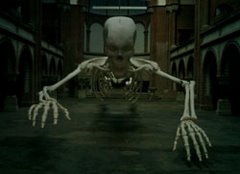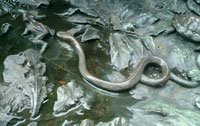 The once prestine bay in Sydney, called Botany where British colonialisation started off, habours highly toxic waste form the industrial age. To 'keep Australia clean and beautiful', they are planning to off-shore their industrial waste to Germany.
The once prestine bay in Sydney, called Botany where British colonialisation started off, habours highly toxic waste form the industrial age. To 'keep Australia clean and beautiful', they are planning to off-shore their industrial waste to Germany.“Orica Australia is proposing to export 22,000 tonnes of highly toxic hexachlorobenzene (HCB) waste to Germany. The waste is supposed to be incinerated in Leverkusen, Dormagen, Herten and Brunsbuettel. Two of the incinerators are run by the Chemical company Bayer.” “Orica, the $5.4 billion parent company of Dulux, Cabot's, Selleys, Yates and Thrive, and the world's biggest maker of explosives, owns the waste, and says it cannot be properly destroyed in Australia.“
Hexachlorobenzene (HCB)
Petition against in Germany, Bund-N.R.W.
Image: Graffiti, Berlin








